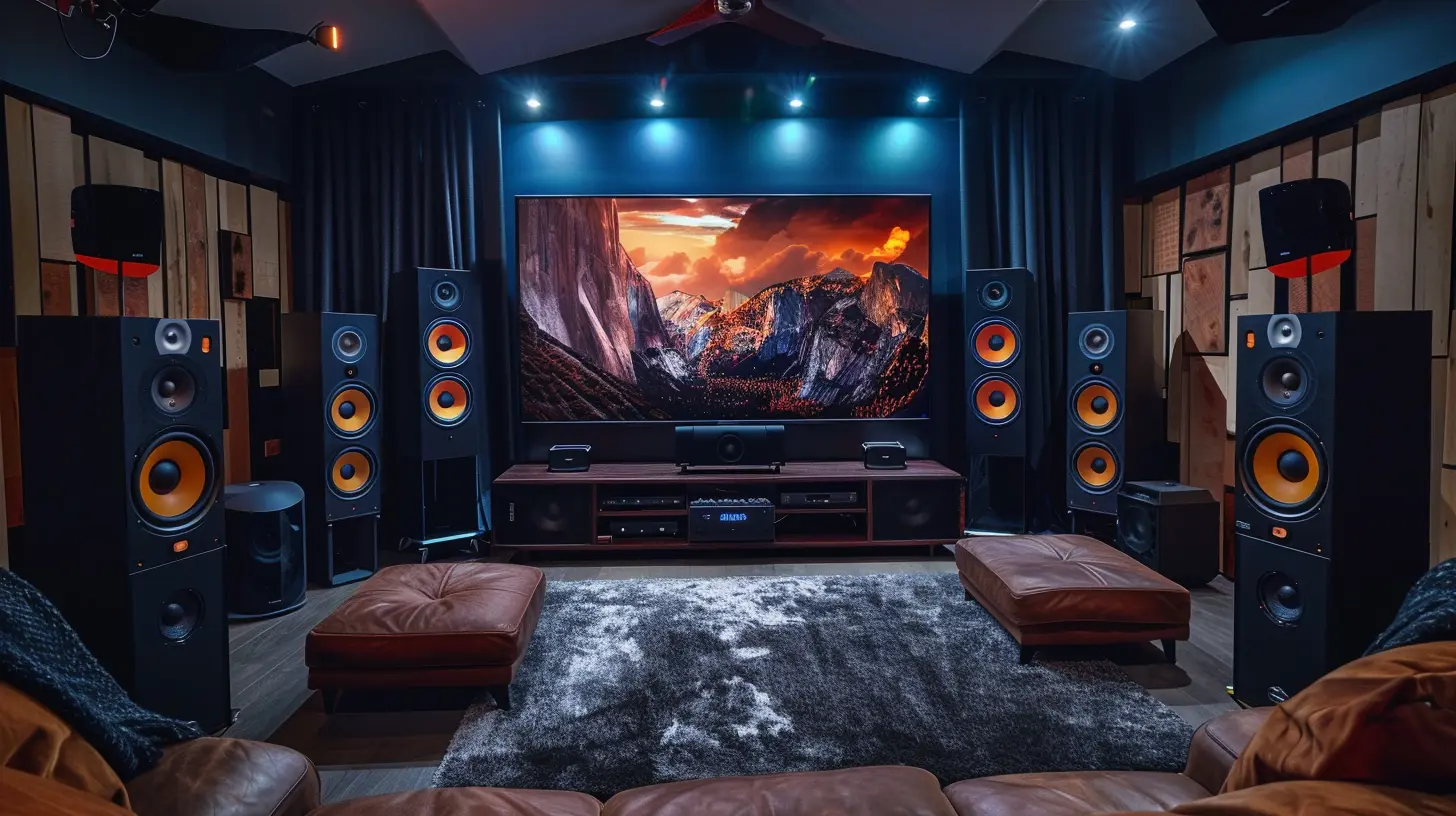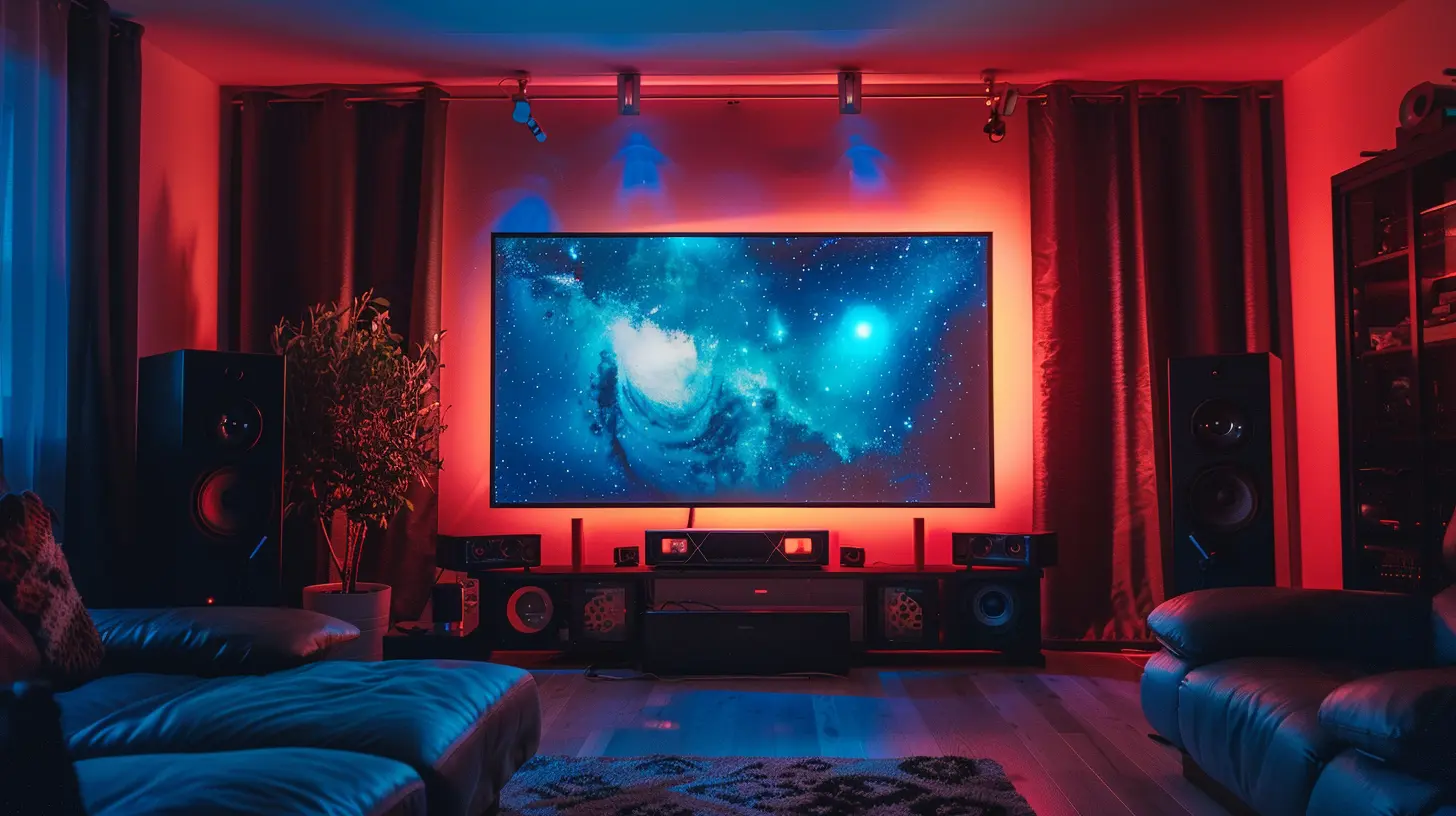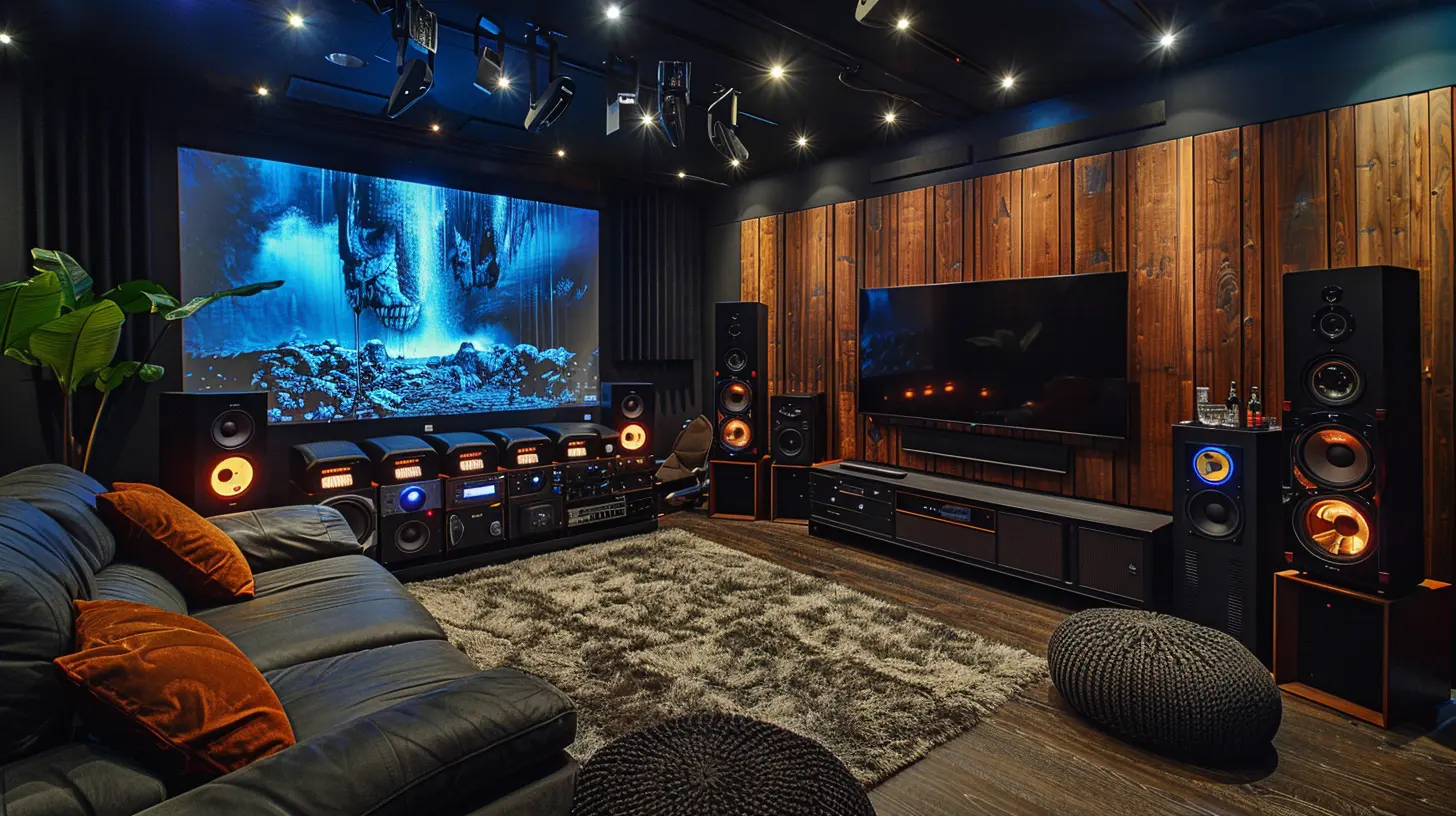Dolby Atmos vs. DTS:X: Which Surround Sound Format is Right for You?
31 July 2025
If you've ever watched a movie and felt like the sound was coming from every corner of the room — even above you — there's a good chance you've experienced something magical: immersive audio. And when it comes to this next-level audio tech, you're probably staring down the two biggest names in the game: Dolby Atmos and DTS:X.
But let's be real. Most of us aren’t audio engineers. We just want home theater sound that gives us goosebumps and makes the floor rumble during explosions. So, here comes the golden question: Dolby Atmos vs. DTS:X — which one should you choose?
Buckle up, because we're about to go deep into the sonic rabbit hole.
🎧 What Exactly Are Dolby Atmos and DTS:X?
Before you start picking sides, let’s break down what these formats actually are.Dolby Atmos: The 3D Soundscaper
Dolby Atmos is all about creating a three-dimensional sound field. Picture that—sound not just around you, but above you too. Instead of assigning sounds to specific channels (like left, right, center), Atmos treats sound as objects that can move freely in a 3D space.Say there's a helicopter flying overhead in a movie. With Dolby Atmos, you'll actually feel it traveling from behind you, over your head, and then disappearing into the distance. It’s more than just hearing — it’s experiencing.
DTS:X: The Flexible Competitor
DTS:X, on the other hand, is like the cool, laid-back cousin. It also uses object-based sound, but it's not as picky about how many speakers you have or where you put them. It adapts to your setup. That’s a big plus for folks who don’t want to rip out walls or invest in ceiling speakers.You still get that 3D surround experience, but with fewer rules.
🤔 Object-Based Audio: What’s the Big Deal?
So, why is object-based audio such a game-changer?Imagine traditional surround sound as painting by numbers. It’s limited to channels — left, right, center, blah blah. Object-based audio is more like using a VR headset for your ears. Each sound is its own “object”, which can move and shift naturally in a 3D environment.
Both Dolby Atmos and DTS:X offer this, but they play by different rules.
🔍 Let’s Break It Down: Dolby Atmos vs. DTS:X
Now to the meat of it. Let’s pit these two audio giants head-to-head and see how they really stack up.1. Sound Quality
Both offer jaw-dropping sound, no question. But Dolby Atmos has a slight edge in terms of height realism. It gives you that “wow” moment where you swear you can feel raindrops trickling from the ceiling.DTS:X isn’t behind by much, and many audiophiles even prefer its "rawer" and more dynamic sound. It can come across as less processed compared to the cinematic polish that Atmos typically delivers.
Winner: Tie. Depends on personal taste.
2. Hardware Requirements
This is where the gap widens.To get the most out of Dolby Atmos, you're going to need an Atmos-capable receiver and possibly ceiling-mounted or upward-firing speakers. And while some soundbars try to simulate Atmos, it's usually not quite the same.
DTS:X? Way more forgiving. It works with your existing setup and doesn't demand ceiling speakers to flex its muscles.
Winner: DTS:X
3. Content Availability
Here’s where Dolby punches hard. Atmos is everywhere—Netflix, Disney+, Apple TV+, and dozens of 4K Blu-rays support it out of the box. You’ll even find Atmos in some mobile devices (hello, AirPods Pro).DTS:X content? Kind of like a hidden gem. It’s mostly found on Blu-rays and hasn’t reached the same streaming saturation.
Winner: Dolby Atmos
4. Customization
DTS:X lets you adjust the sound dialogue volume separately from the background noise. It's like having a personal volume slider for each character’s voice. Pretty handy when the explosion drowns out someone's whispering confession.Dolby Atmos doesn’t quite offer that level of customization out of the box.
Winner: DTS:X
5. Gaming Experience
If you’re all about stepping into the battlefield, both formats bring solid game support. However, Atmos for gaming has been making waves thanks to Xbox and some PC titles that fully support it.Still, many DTS:X-enhanced games also deliver compelling immersion.
Winner: Dolby Atmos, slightly
🏠 Setting Up: The Living Room Factor
Here’s the thing: installing ceiling speakers isn’t everyone’s idea of fun. Unless you’re building a dedicated home theater from scratch, you might not want to tear into drywall.Lucky for you, soundbars have entered the chat.
Dolby Atmos Soundbars
These guys use up-firing speakers to bounce audio off your ceiling. Do they work? Surprisingly well — assuming your ceiling isn’t too high or oddly shaped.DTS:X Soundbars
DTS:X doesn’t necessarily need up-firing speakers, which makes it more flexible for small apartments or weird-shaped rooms. Plus, because it adapts to your setup, you can still get 3D audio without the hassle.Takeaway: Atmos is flashier, but DTS:X is friendlier.
🤑 Bang for Your Buck
Let’s talk cost. Because let's be honest — immersive sound isn't cheap.Dolby Atmos receivers and soundbars often carry a slight premium. And remember, you might need extra speakers (or at least Atmos-enabled ones) to get the full effect.
DTS:X? More budget-friendly and works with more systems, so you won’t feel obligated to upgrade everything.
Winner: DTS:X (unless you're chasing audiophile perfection)
🔮 Future-Proofing: Which Format Has Legs?
Dolby has undeniably cast a wider net. From theaters to smartphones, Atmos is becoming the industry standard for immersive audio. It’s even showing up in cars and VR headsets.DTS:X is still a strong player, especially for folks who want a flexible home setup. But its adoption has been slower in streaming and mobile platforms.
Winner: Dolby Atmos
🙋♂️ So, Which One Should YOU Choose?
Here’s the real talk.Choose Dolby Atmos if:
- You want the most cinematic, theater-like experience
- You stream a lot of content from platforms like Netflix or Disney+
- You’re okay installing extra speakers or investing in an Atmos-enabled soundbar
- You're a gaming enthusiast on Xbox or PC
Choose DTS:X if:
- You're working with an existing setup and want to get 3D audio without upgrading everything
- You're buying physical Blu-rays (especially those that support DTS:X)
- You want customizable sound — like tweaking dialogue levels independently
- Budget is a concern, but you still crave object-based audio
No wrong answers here — just different flavors of awesome.
🧪 Bonus Round: Can You Have Both?
Absolutely. Some AV receivers support both Dolby Atmos and DTS:X, giving you the best of both worlds. So if you’re someone who wants every option on the menu, that’s your best bet.Just make sure your media player supports both formats too. This way, you can flip between formats like a DJ spinning vinyl depending on the movie or game.
🎬 Wrapping It Up
In the Dolby Atmos vs. DTS:X showdown, the "best" really depends on you. Both formats promise a mind-blowing escape into sound, each with its own strengths.It’s like choosing between two luxury cars: One has a sleek, futuristic feel and is more widely compatible (Dolby Atmos), while the other is customizable, easier to maintain, and gives you more control under the hood (DTS:X).
At the end of the day, your ears will be the judge. So go ahead — press play, close your eyes, and let the sound transport you.
all images in this post were generated using AI tools
Category:
Home EntertainmentAuthor:

John Peterson
Discussion
rate this article
1 comments
Harrison White
The article effectively dissects Dolby Atmos and DTS:X, highlighting their immersive audio capabilities. While Atmos excels in accessibility and content availability, DTS:X offers rich customization for enthusiasts. Ultimately, the choice hinges on user preference and system compatibility, making it essential to assess individual needs before investing.
August 7, 2025 at 3:19 AM

John Peterson
Thank you for your insightful feedback! It’s great to hear that the article resonated with you and clarified the strengths of both formats. Assessing personal needs is indeed crucial in making the right choice.


